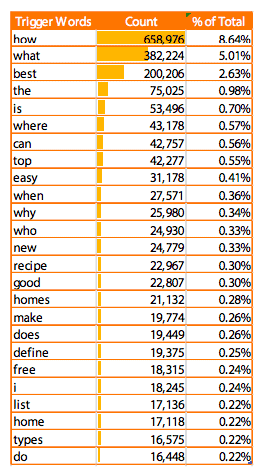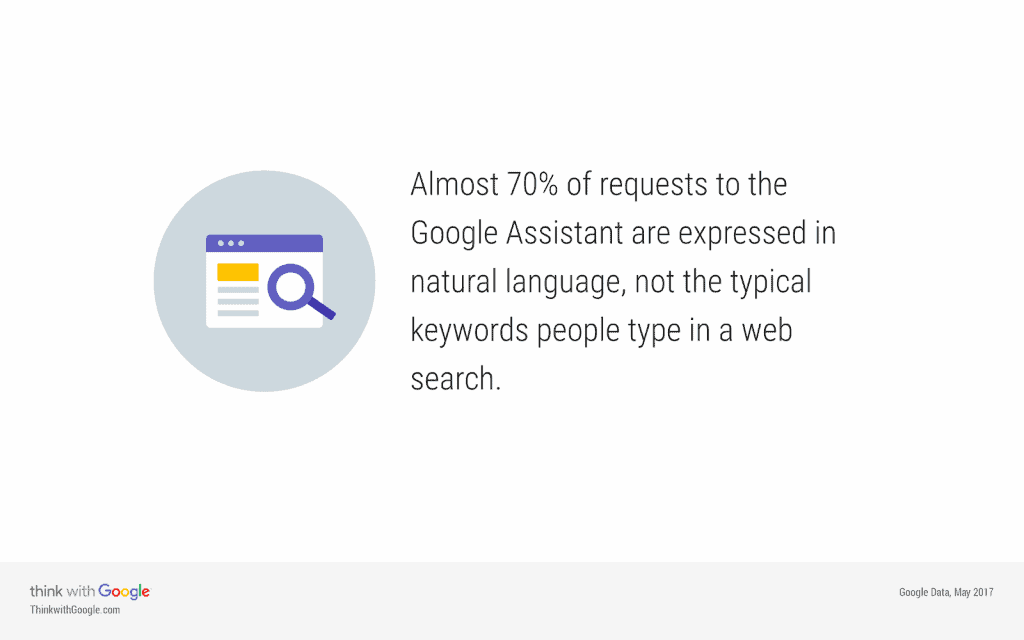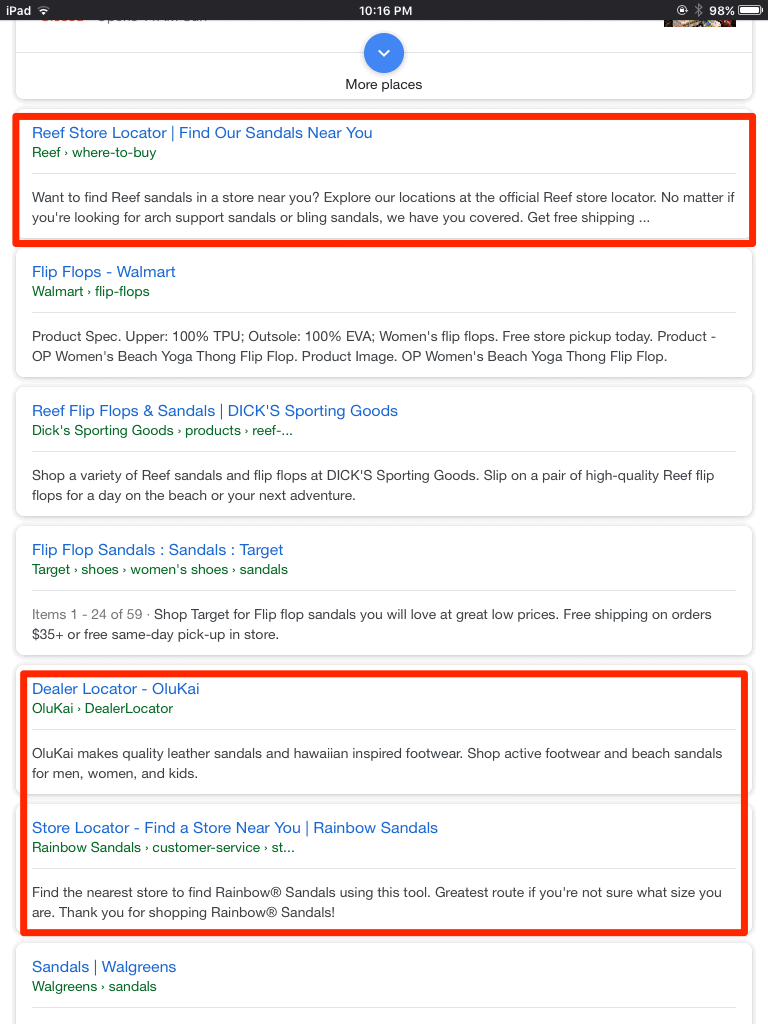“Ok Google, what should ecommerce merchants do about voice search?”
If you’re reading this, chances are you’ve asked some version of that question. Perhaps you’ve heard that 20 percent of mobile queries are voice searches. Or, maybe you’ve noticed that more and more voice-activated devices are hitting the market, and voice tech is continuing to mature (Google’s technology is now 95 percent accurate).
Whatever brought you here, it’s clear that to you that consumers are increasingly voicing out their questions and queries, and you’re looking to put your business in front of them.
The question is, how exactly should you do it?
To shed light on that, we’ve put together some pointers and expert-backed insights on voice search and ecommerce. Read on to get actionable tips on how you can prepare your ecommerce site for voice.
Optimize for questions
Most voice searches come in the form of questions rather than phrases. So, instead of saying “shoe stores los angeles” a user might ask, “where’s the nearest shoe store?” or “what are the best shoe stores in LA?”
Keep this in mind when optimizing your site for voice. Structure your content (i.e. blog posts, FAQ pages, etc.) so they answer your target customers’ questions instead of just considering keywords or phrases.
For best results, pay attention to “trigger words” for voice search, and incorporate them into your content. According to seoClarity, such trigger words include “how,” “what,” and “best”.

Doing so won’t just help you rank for voice search queries, but it will also increase the chances of landing a featured snippet spot.
And this brings us to our next point…
Aim for position zero (aka featured snippets)
Obtaining the featured snippet spot (aka “position zero”) on the search results page will be the name of the game in a voice search-dominated world.
“Snippets are a driving factor in voice search,” says Krista Fabregas, the ecommerce analyst at Fit Small Business. “Google considers the snippet as the zero-result and places it higher than any other search result in a query. So, if there’s a snippet available for a voice search query, the snippet and the website it comes from are what Google Assistant and Siri will read back to its users.”
(Note: Alexa is a different ballgame. Fabregas says that “Alexa is Amazon-driven and great at delivering Amazon shopping results, but general web search is not its strength.”)
As an ecommerce merchant, there are several steps you can take to land position zero. Kent Lewis, President and Founder Anvil, says that you can start by “structuring your content to answer common search queries on the target topic.”
“One way to identify which pages on your site are best candidates for position zero is to look at your high-performing pages in analytics. For those that generate an Answer Box, you can reverse-engineer the current position zero snippet to gain insights into why and how they are ranking.”
How can you optimize your content for featured snippets? According to Lewis, “Beyond restating and answering the question succinctly on the target page, be sure to incorporate the most relevant keywords in the page URL, title and H1 tag. STAT found that featured snippet URLs included an exact match query in the tag 21% more often than regular results.”
Use natural language
“When people use voice search, it’s only logical to assume that they enter a query similar to how they speak in real life — typing requires more time, thus, we shorten our queries to the very minimum, whereas speaking doesn’t require much effort,” says SEMrush Content Producer and PR Manager Meri Chobanyan.
Google’s data supports this. According to the search giant, “Almost 70% of requests to the Google Assistant are expressed in natural language, not the typical keywords people type in a web search.”

Because of this, focusing on long-tail keywords will be key. As Chobanyan puts it, “We have now moved into the new era of semantics rather than mere keyword-oriented website optimization. And long-tail keywords are the result of that. People using voice search often look for a more specific information and enter longer queries.”
What does this mean for you? Well, for starters it means you need to identify the long-tail (and conversational) search queries that your customers are using. Chobanyan recommends getting together with your staff (particular your support team) and “brainstorm keywords and phrases your potential customers are more likely to enter to stumble upon your business.”
Another great way to identify natural and conversational keyword is to “explore how your customers interact and talk with each other online,” says Jamie Dinning, the eCommerce manager at SVCLabs.
“Forums and social media are great starting points — this sort of language could be how they approach your eCommerce site in the future.”
Don’t forget about local search
If you cater to local markets, use voice search to get in front of shoppers (particularly mobile users) looking for products or stores in their city.
“Voice search using mobile devices is a fast-growing driver of traffic to brick-and-mortar stores, too,” shares Fabregas.
“To capitalize on this, local retailers need to craft web content that covers the breadth of their product or service offering. It’s especially important that local retailers target long-tail keywords that answer localized search queries, such as: ‘where can I find beading supplies in Houston?’ A Houston-area jewelry supply that includes the phrase ‘find beading supplies in Houston’ in its web content has a good chance of taking the top spot in this localized voice search.”
Another good way to appear in local searches is to create store locator pages. Have a look at the screenshot below which shows the organic mobile search results for the query “where to buy flip-flops near me.” Notice how 3 out of the top 7 organic results point to store locator pages.

If you haven’t done so yet, optimize your store locator pages for local search. Incorporate the search terms that local users are entering into your title, headers, and URL. It’s also helpful to upload your local store information to Google to increase your chances of being included in local search results.
Final words
Voice search isn’t just a trend or a shiny new piece of technology. It’s rapidly becoming part of consumers’ daily lives and it’s transforming how people use search engines and smart devices. If you’re looking to keep up with consumers voicing out their search queries, now is the time to do it. Use the tips in this post to kickstart your voice search efforts, then continue testing and optimizing to capture the top spot in SERPs.
Additional sources of voice search resources can be found at voicesearch.com
Need help doing that? Get in touch with us to discuss your ecommerce and voice search needs.
